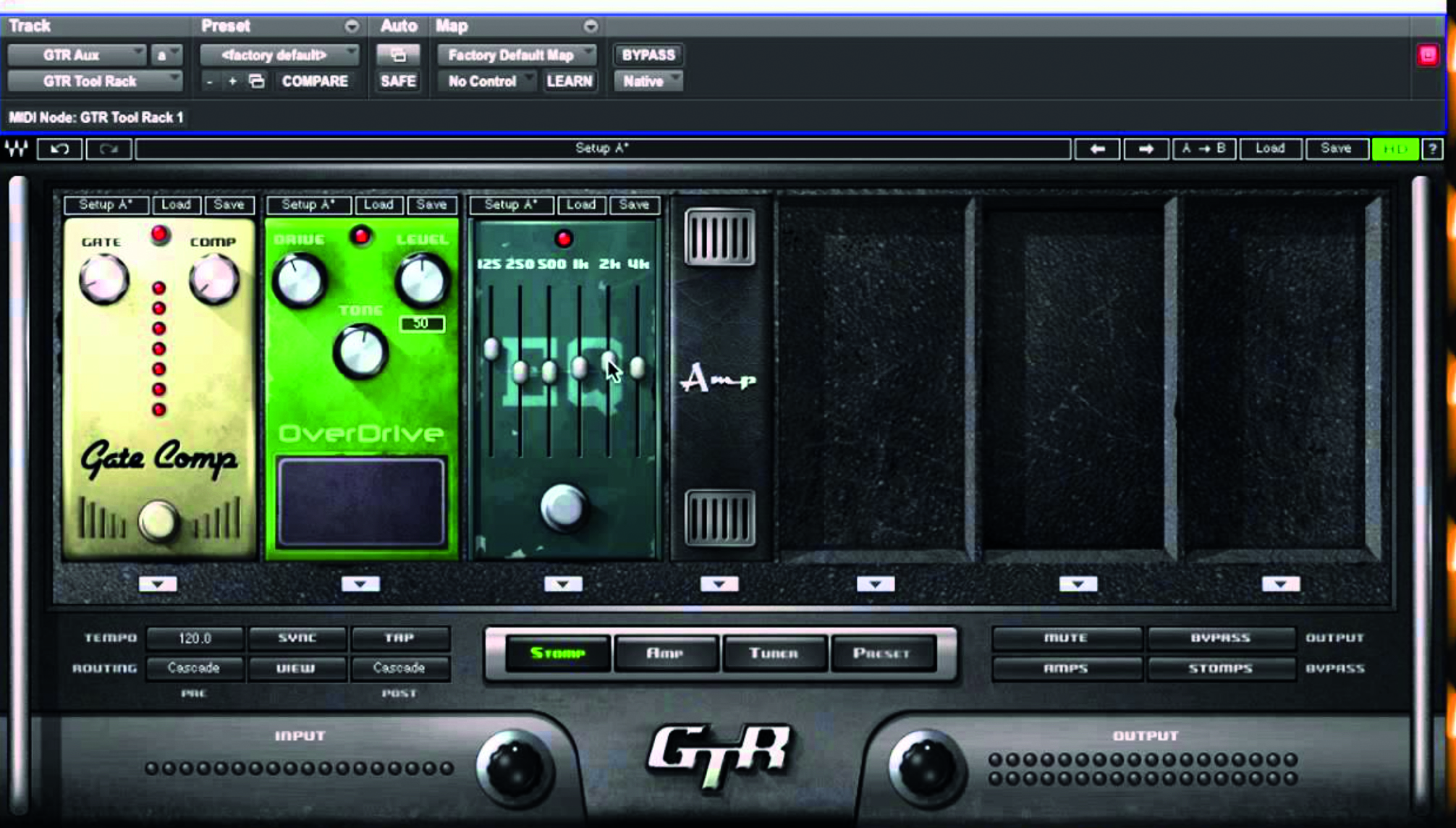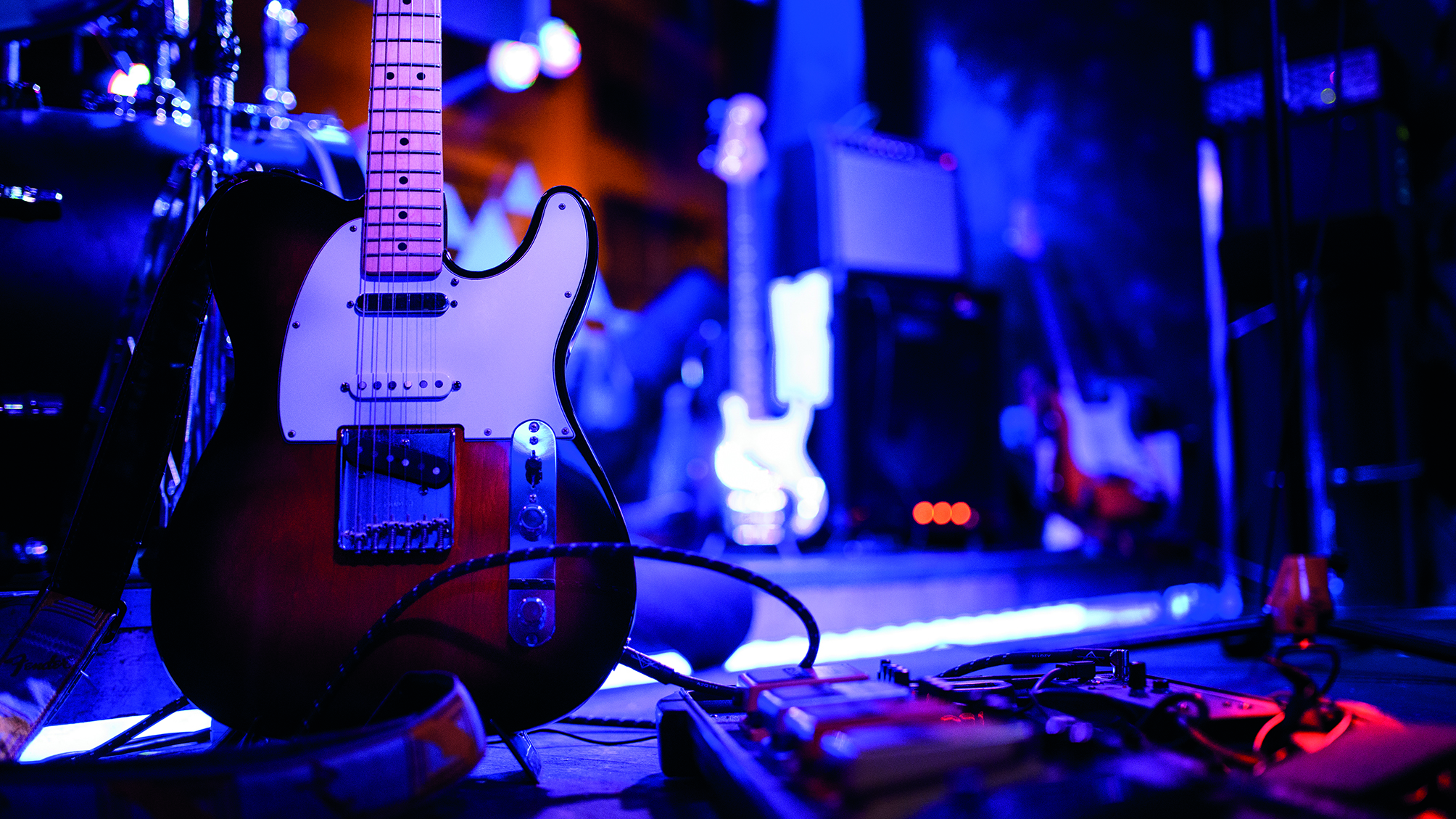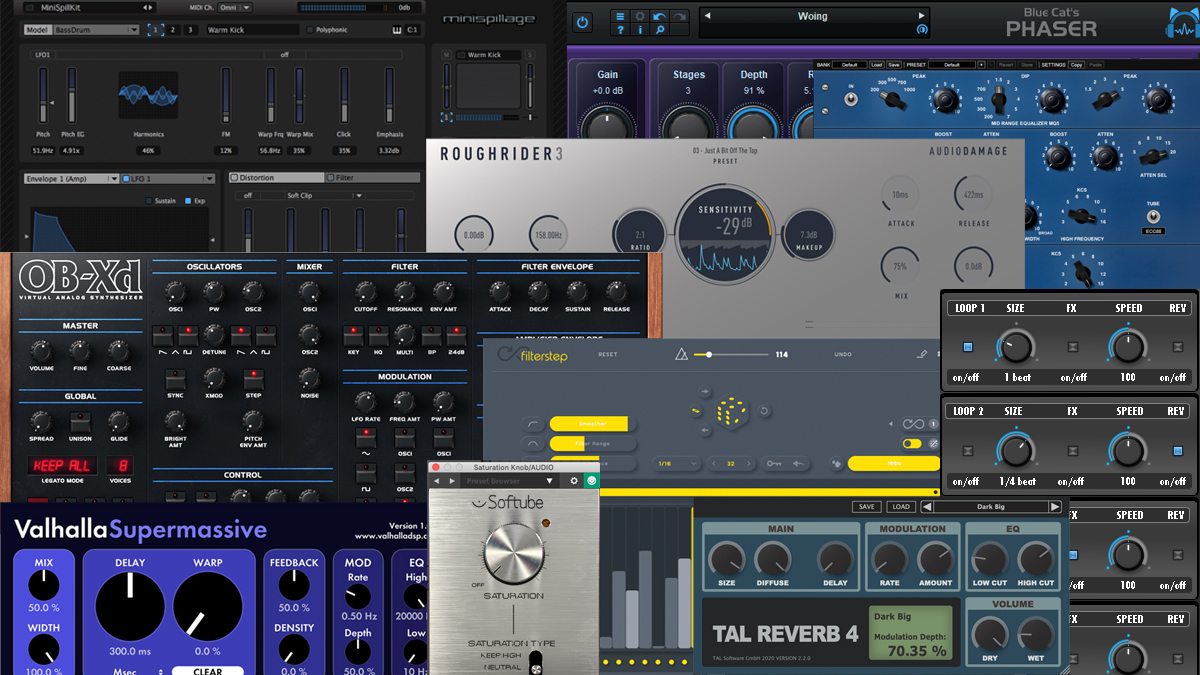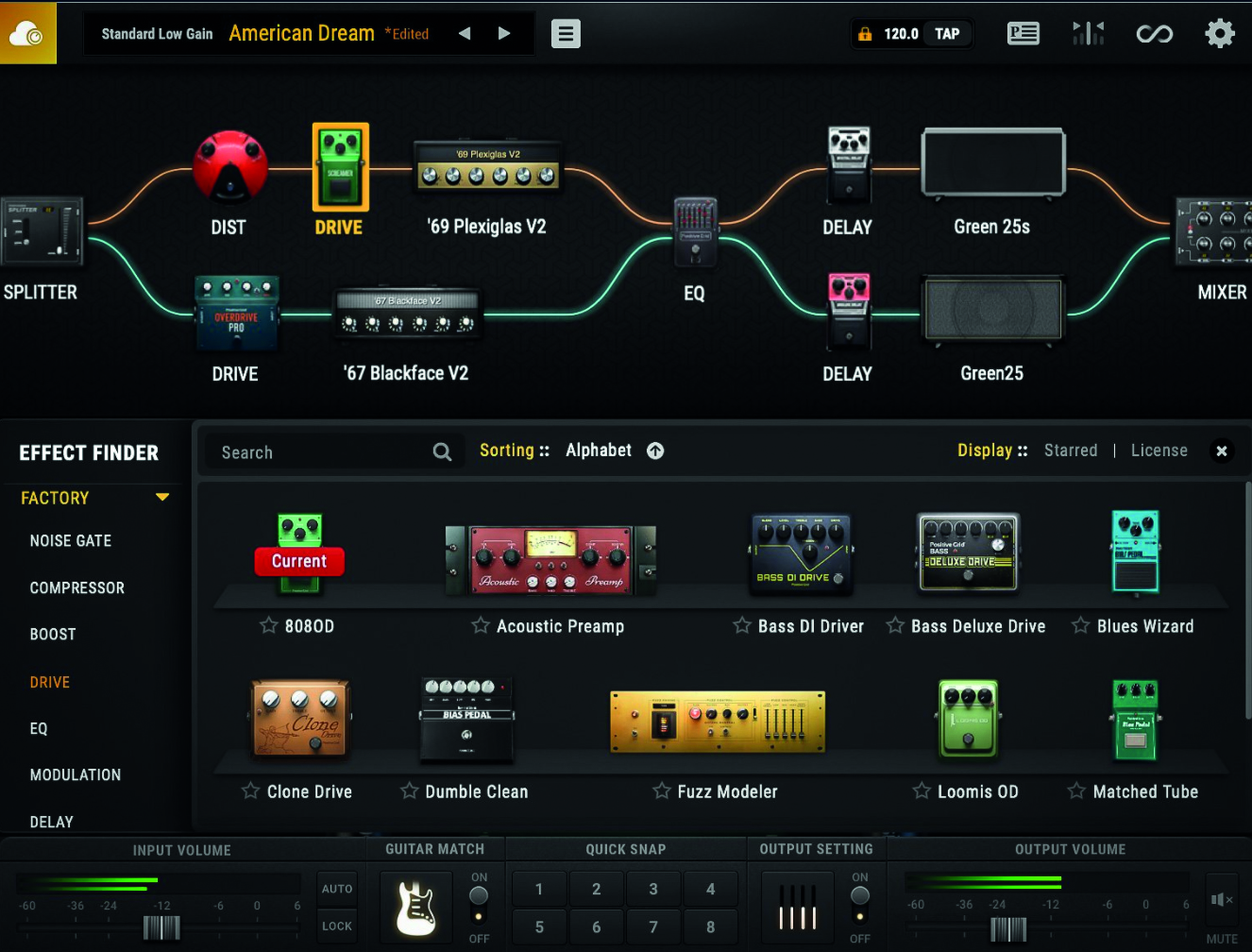How to get a great guitar sound... without buying pedals
Best of 2022: Effects pedals are many guitarist’s most treasured playthings. But, the right software selections can not only imitate, but exceed such pedal-based effects

Join us for our traditional look back at the stories and features that hit the spot in 2022
Best of 2022: Fiery distortions, angelic choruses and delay-coated melodies are all fashioned by effects pedals. The first forays into effecting the signal chain in odd ways were found within amplifiers way back in the 1950s and 60s.
Though these mainly spatial effects would subtly shade certain contemporary genres (such as the slap-back echo of rockabilly, or the spring reverb-coated surf genre) it was in the studio where the likes of The Beatles, The Beach Boys and Pink Floyd began to explore how tweaking things in unconventional ways could fundamentally alter their guitar’s tone – particularly when speed was manipulated with tape, and the expansive characteristics that real life reverb chambers could impart.
It wasn’t long before transistor-based solid-stage effects pedals became de rigeur, and allowed those without access to high-end studios the ability to majorly expand the sonic potential of their instrument.
Since those early days, guitar effects pedals (aka ‘stomp boxes’) have developed an iconic heritage and personality every bit as renowned as the six-stringed instruments they serve. It’s not just guitarists that love a good stomp box, creative musicians of all stripes have long enjoyed the effects pedal’s simple functionality as a major weapon in their sound design arsenals.

While we have to admit, the sight of a characterful pedalboard still leaves us giddy with excitement, it’s difficult to not accept that the range, tone and additional abilities of software guitar effects surpass what a straightforward pedalboard is capable of.
Take BIAS’s FX 2, or the range of virtual pedals found as standard within Logic. These virtual pedalboards feature heaps of vividly-designed, distinctive pedals modelled after some of the most well-regarded from pedal history. The thrill of mixing and matching a personalised signal routing is retained, while further tweaks can be applied and effects can be switched and A/Bed long after recording has taken place.
Want all the hottest music and gear news, reviews, deals, features and more, direct to your inbox? Sign up here.
Shut up and drive
Overdrive, distortion and fuzz are the most well known guitar effects, and while variations exist between them, the beefier tone is one which lead and rock players rely on as pretty much the default state for their instrument.
Outside of the variety of distortions you’ll find in the aforementioned fully-featured software guitar suites, plugins like the magnificent Decapitator from SoundToys can yield unrivalled levels of grit. Modelled after some of those classic pieces of kit that defined the early experiments in studio guitar sound-effecting, its high and low-pass filters are a godsend for sculpting just the right levels of dirtiness for your track.

Speaking of dirt, Native Instruments have some serious chops in the sound-muddying world, with their DIRT effect doing exactly what it says on the tin. With two virtual distortion units running in parallel, interesting blends can be mixed, the additional FREAK and BITE effects from the same series add modulation and bit-crushing flavourings too. Wondrous new sounds can be wrangled via creative experimentations with all three.
If you’re not in the market for expensive new software, then there are free solutions. Softube’s Saturation Knob is easy to get to grips with – being just one main knob with an additional three-state switch that cycles through saturation types, it’s an all-purpose overdrive that has a pretty big range of applications, particularly for being a generously free plugin.
Expect delays
Delay is one effect that isn’t solely synonymous with guitarists, being used across the music production spectrum, but it’s hard to imagine mixing a guitar without a significant amount of spatial processing being done to the signal, should the signal be dry that is.
Time was, room characteristics were (and actually still are, to many producers/musicians) fundamental in capturing a good guitar sound, but as we discussed in the previous section, virtual room modelling has come on a long way, and allows for far greater manipulation than capturing a signal that has the room sound hard-stamped onto it.
You're one click away from a completely fresh sound
Delay is a time-based effect that replicates and plays back the signal after an adjustable period of time, creating a ghostly after-image that reinforces certain moods.
While legendary delay pedals such as EHX’s Memory Man and Boss’s DM-2 are still available from certain suppliers today, and modern alternatives like Strymon’s exemplary TimeLine can be put to astounding use in a studio context, from a purely in-the-box perspective, you’re spoilt for choice.

The best free VST plugins 2021: must-have freeware synths, drum machines and effects
FabFilter’s Timeless 3 captures a vintage tape-flavoured studio delay that is a great fit for guitars. Featuring six analogue-sounding filters, adjustable feedback and a drag-and-drop modulation interface that encourages you to dive into its grand depths, its resulting delay effects are indistinguishable from those conjured by the fabled pedalboards of the past.
Sticking true to that classic studio delay, the dimensions offered up by UAD’s Galaxy Tape Echo are both multifaceted and warm. Modelled after that god-tier studio icon, the Roland Space Echo, the Galaxy is able to provide sublime tape delay, legitimate wow and flutter effects, pitch-shifting and a range of other time-shifting effects, as well as a broad spring reverb.
Did I stutter?
Traditional guitarists’ volume effects like tremolo and additional modulation effects such as phaser, chorus and flanger are also very well served by the software world. Eventide’s Undulator is of particular note for those searching for shimmering, rhythmic tremolos, as well as delay and feedback effects, while Softube’s Fix Phaser allows for the building of those zany sci-fi sounds that classic pedals such as the MXR Phase 90 once provided.
In recording terms there are still legitimate pros and cons of both real-gear recording vs software processing
The textured, fatter sound of the chorus effect (actually generated by a doubling of the input sound slightly out of sync with the original) is a fixed staple of many pedalboards, and plugins like MeldaProductions’ MChorusMB allow for even more nuanced tweaking of this mutable, fluid effect. Its built-in step sequencer-based oscillator algorithm, along with the slick ability to morph between four different chorus states, means that you’ve got quite an advantage over pedal-stompers.
While the software route is well and good, in recording terms there are still legitimate pros and cons of both real gear recording vs processing exclusively with software. But, you’re always one click away from a completely fresh sound with a catalogue of software effects than you’d be if you stuck to just the individually purchased foot pedal domain.
But there are, of course, those who would say that, when playing their instrument, it’s still preferable to solidly stomp their effects into action, and carve more effectively with tactile knob adjustments. Either way, great sounds are hugely accessible, and today, the sky is very much the limit.
6 of the best guitar effects plugins
Blue Cat Axiom | £170 / $199

Though it sports a wealth of impressive amp sims, it’s Axiom’s multifaceted selection of effects that really piques our interest. Its more than 70 in-built effects can be loaded into any of its 32 plugin slots, including a variety of delay and distortions that are out of this world. It can also accommodate third party AU or VSTs into its signal chain.
Positive Grid BIAS FX 2 | £99 / $99

While Amp 2 has your virtual amps and cabs covered, FX 2 enhances your Positive Grid rig with an amazing effects processor. FX 2 sports a heap of virtual stomp boxes, modelled rackmount effects and custom-designed weird and wonderful sonics via ToneCloud. You can also use its Guitar Match software to change your instrument’s tone to that of the coveted classic. Nice.
Waves GTR 3 | £95 / $129

A bit of a legend of software guitar processing, GTR3’s virtual stompbox effects are among some of the most treasured by home guitarists. Its distortion effects are particularly full-on, while its EQ is up there with the very best. In the 13 years since its launch, its effect library has been interestingly applied to more than just guitar. It’s a bargain now, too.
Ultimate Guitar ToneBridge | FREE

Staying with indispensable free stuff, this app applies a different mindset to guitar tone modification. ToneBridge provides famous artist tone presets within a virtual pedal framework, from Nirvana to Daft Punk. Over 9000+ presets are available within, which can be used as a starting point for a whole new sound. Inspired!
Acon Digital Reverb Solo | FREE

Another head-scratchingly free piece of software, The Reverb Solo is a godsend for guitar mixing, and is immediately useful for a wide range of studio mixing purposes. Its dead-easy, one-knob UI means that you’ll be immersed in new room and space sizes in no time. A/B testing functionality is handy too.
TSE R47 | FREE

At the astonishing price of absolutely zilcho, TSE Audio’s virtual version of the famous Rabid Rodent ‘RAT’ pedal, the R47 sounds authentic and accurate, in part due to its careful modelling against an original schematic. If you want robust-sounding distortion, used by some of rock’s heavyweights, give this a try.


Computer Music magazine is the world’s best selling publication dedicated solely to making great music with your Mac or PC computer. Each issue it brings its lucky readers the best in cutting-edge tutorials, need-to-know, expert software reviews and even all the tools you actually need to make great music today, courtesy of our legendary CM Plugin Suite.
